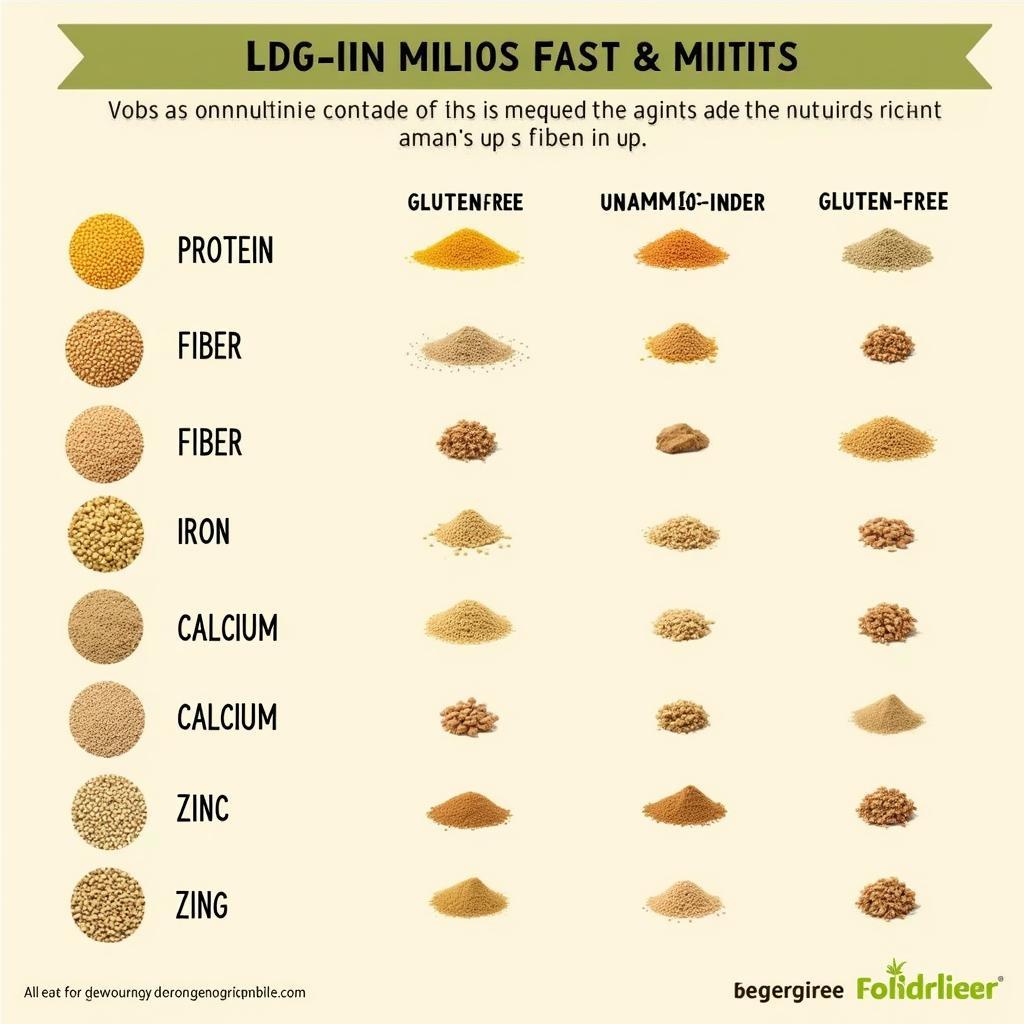Discovering the Power of African Finger Millet
African Finger Millet, a resilient and nutritious grain, has been a staple in African diets for centuries. From its rich history to its diverse culinary uses, this ancient grain offers a wealth of benefits waiting to be rediscovered. This article delves into the remarkable world of African finger millet, exploring its nutritional value, cultural significance, and potential to contribute to food security.
A Nutritional Powerhouse: Unlocking the Benefits of African Finger Millet
African finger millet stands out among other grains due to its impressive nutritional profile. Rich in essential minerals like iron, calcium, and zinc, it provides a substantial boost to overall health. The grain is also a good source of dietary fiber, promoting healthy digestion and reducing the risk of chronic diseases. Its high protein content makes it an excellent source of plant-based protein, particularly important for vegetarian and vegan diets. What’s more, African finger millet is gluten-free, making it a suitable alternative for those with gluten sensitivities. Its low glycemic index makes it a healthy choice for individuals managing diabetes.
 Nutritional Composition of African Finger Millet
Nutritional Composition of African Finger Millet
From Farm to Table: Exploring the Culinary Versatility of African Finger Millet
African finger millet’s culinary versatility is another reason for its enduring popularity. Across the continent, communities have developed diverse and delicious ways to incorporate this grain into their traditional dishes. From hearty porridges and nutritious flatbreads to refreshing beverages and fermented products, the possibilities are endless. For instance, in Uganda and Kenya, ugali, a thick porridge made from finger millet flour, is a staple food often served with stews or vegetables. In Ethiopia, finger millet is used to make injera, a spongy flatbread that forms the base of many Ethiopian dishes. It is also incorporated into various other culinary delights, including dumplings, steamed cakes, and even alcoholic beverages.
Cultivating Resilience: African Finger Millet and Food Security
African finger millet thrives in harsh conditions where other crops struggle. Its drought tolerance and ability to grow in poor soils make it a valuable crop in arid and semi-arid regions of Africa. This resilience plays a crucial role in ensuring food security, particularly in areas prone to drought and unpredictable weather patterns. Its adaptability to different climates and soil types contributes significantly to sustainable agriculture and the livelihoods of countless farmers across the continent. By cultivating this robust grain, communities can buffer themselves against the impacts of climate change and ensure a stable food supply. This also translates into improved economic stability and increased self-sufficiency for rural communities.
“African finger millet is more than just a grain; it’s a lifeline for many communities,” says Dr. Amina Kone, an agricultural researcher specializing in drought-resistant crops. “Its ability to thrive in challenging environments makes it a critical component of sustainable food systems.”
A Grain with a Story: The Cultural Significance of African Finger Millet
Beyond its nutritional and agricultural importance, African finger millet holds deep cultural significance in many African societies. It is often intertwined with traditional ceremonies, rituals, and celebrations, symbolizing prosperity, health, and community. In some cultures, finger millet is considered a sacred grain, used in religious offerings and ceremonies marking important life events. This cultural significance further underscores the importance of preserving and promoting the cultivation of this ancient grain.
Conclusion: Embracing the Potential of African Finger Millet
African finger millet offers a wealth of benefits, from its nutritional richness and culinary versatility to its contribution to food security and cultural heritage. By rediscovering and embracing this ancient grain, we can unlock its immense potential to nourish communities, promote sustainable agriculture, and celebrate the rich diversity of African foodways. As we look towards a future of food security and resilience, African finger millet stands as a symbol of hope and a testament to the enduring power of traditional crops.
“Investing in African finger millet is not just about agriculture; it’s about investing in the future of food,” adds Dr. Kone. “This grain holds the key to building more resilient and sustainable food systems, especially in the face of climate change.”
FAQ
- What is African finger millet?
- What are the health benefits of eating African finger millet?
- How is African finger millet cooked?
- Where can I buy African finger millet?
- Is African finger millet gluten-free?
- How does African finger millet contribute to food security?
- What is the cultural significance of African finger millet?
For further support, contact us at Phone Number: +255768904061, Email: kaka.mag@gmail.com Or visit our address: Mbarali DC Mawindi, Kangaga, Tanzania. We have a 24/7 customer service team.